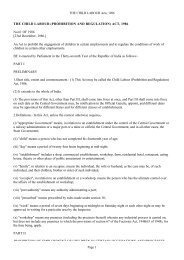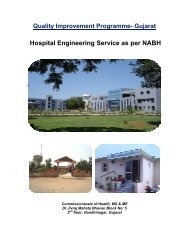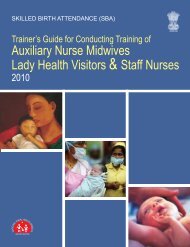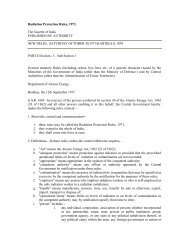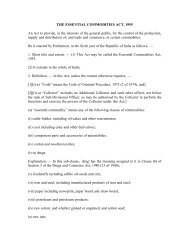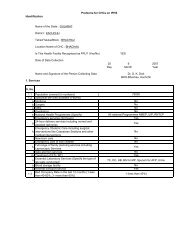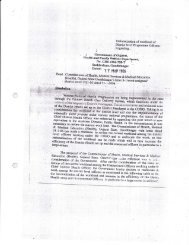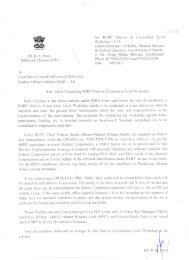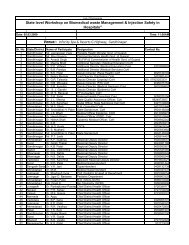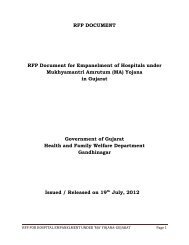Respiratory distress in - Newbornwhocc.org
Respiratory distress in - Newbornwhocc.org
Respiratory distress in - Newbornwhocc.org
Create successful ePaper yourself
Turn your PDF publications into a flip-book with our unique Google optimized e-Paper software.
NNF Teach<strong>in</strong>g Aids:Newborn Care<br />
If the <strong>distress</strong> occurs at the end of first week or later the cause would be most<br />
probably pneumonia. Presence of a cleft palate, history of a chok<strong>in</strong>g episode<br />
could <strong>in</strong>dicate aspiration pneumonia. If however the baby has hepatomegaly or<br />
is <strong>in</strong> shock one needs to th<strong>in</strong>k of a cardiac cause. On the other hand if the baby<br />
is dehydrated and <strong>in</strong> shock, a possibility of metabolic acidosis needs to be<br />
considered.<br />
Slide RD-12<br />
Suspect surgical cause<br />
We need to suspect surgical conditions if there are any obvious malformations<br />
(cleft palate, micrognathia) or if there is a scaphoid abdomen (diaphragmatic<br />
hernia) . Presence of froth<strong>in</strong>g or history suggestive of aspiration may give a<br />
clue to the presence of a tracheo-esophageal fistula (TEF). Worsen<strong>in</strong>g of<br />
condition dur<strong>in</strong>g resuscitation at birth by bag and mask ventilation -th<strong>in</strong>k of<br />
diaphragmatic hernia.<br />
The common malformations/surgical conditions which could present <strong>in</strong> the<br />
neonatal period <strong>in</strong>clude TEF, diaphragmatic hernia, lobar emphysema, choanal<br />
atresia and cleft palate. It is important to recognize these conditions early as<br />
immediate referral and appropriate management would improve prognosis. A<br />
baby with suspected TEF should not be fed and a baby with suspected<br />
diaphragmatic hernia should not be resuscitated with bag and mask.<br />
Slide RD- 13,14<br />
Investigations<br />
Investigations would obviously depend on the possible etiology. If PROM is<br />
present one should look for polymorphs <strong>in</strong> the gastric aspirate. The first gastric<br />
aspirate should be used for this test and the aspirate should be clear. Shake<br />
test is a simple bedside test and should be done <strong>in</strong> preterm babies with<br />
respiratory <strong>distress</strong>. The gastric aspirate (0.5 ml) is mixed with 0.5 ml of<br />
absolute alcohol <strong>in</strong> test tube. This is shaken for 15 sec. and allowed to stand<br />
for 15 m<strong>in</strong>utes. A negative shake test i.e. no bubbles or bubbles cover<strong>in</strong>g less<br />
than 1/3 rd of the rim <strong>in</strong>dicates a high risk of develop<strong>in</strong>g RDS and the presence<br />
of bubbles at more than 2/3 of the rim <strong>in</strong>dicates lung maturity and decreased<br />
risk of develop<strong>in</strong>g RDS. Sepsis screen is <strong>in</strong>dicated if <strong>in</strong>fection is suspected. The<br />
most important <strong>in</strong>vestigation <strong>in</strong> a neonate with respiratory <strong>distress</strong> is a chest X-<br />
4




